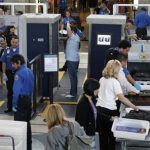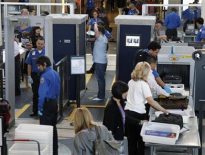(Reuters) – The would-be suicide bomber in a plot by al Qaeda’s Yemeni affiliate was planted in the group by an allied intelligence agency or turned into an informant early in the conspiracy, U.S. officials said on Tuesday.

The CIA and its foreign partners tracked the plot for several weeks and then managed to get the informant to deliver the bomb outside Yemen, possibly to Saudi Arabia or the United Arab Emirates, sources said.
U.S. intelligence officials wanted to keep a lid on details of how the plot was uncovered to make sure the informant and the family was safe. Sources said the informant was believed to be connected to a foreign intelligence agency allied with the CIA.
The New York Times reported the would-be suicide bomber was an intelligence agent for Saudi Arabia who volunteered for the mission to detonate the bomb aboard a U.S.-bound airliner.
The plot was publicly revealed on Monday.
U.S. and allied intelligence agencies in the last 10 days seized an explosive device that was an improved version of the “underwear bomb” in a failed Christmas Day 2009 airline bombing attempt over Detroit, American officials said
The plot to introduce the bomb aboard an aircraft was the work of Yemen-based Al Qaeda in the Arabian Peninsula, or AQAP, considered the group’s most dangerous offshoot, U.S. officials said.
The latest device appeared to be similar to the work of fugitive Saudi militant Ibrahim Hassan al-Asiri, who U.S. sources believe is a bomb-maker working with AQAP. The FBI was studying the device to help prevent any future bombing attempts.
“The FBI has possession of the device and is analyzing it, which is a considerable intelligence benefit,” said Senator Susan Collins, senior Republican on the Homeland Security Committee.
The Transportation Security Administration “also will be able to examine the device to test whether or not it would have been detected, and make adjustments to improve the chances that similar devices would be detected,” she said in an email.
NON-METALLIC DETECTION
U.S. security measures could detect a non-metallic bomb like the one in the latest plot, but technology such as body scanners is not deployed at all U.S. airports, Obama administration officials said.
There was no immediate sign the administration was ordering changes in aviation security procedures. The plot never came close to fruition and no aircraft was in danger, officials said.
The Department of Homeland Security emphasized the importance of security measures to air carriers and foreign government partners in guidance that reiterated and updated existing security guidelines and encouraged continued vigilance, a DHS official said.
Security steps taken since the failed 2009 attempt, in which a similar device was carried onto a plane by Nigerian militant, Umar Farouk Abdulmutallab, “would have been able to prevent this device from bringing down an airplane,” the official said.
Senator Saxby Chambliss, the senior Republican on the intelligence committee, said the plot was a reminder of how committed AQAP was to attacking Americans. “Once again we’ve seen they think we are vulnerable through the airways. That’s why we give such emphasis to the screening process,” he said.
Other U.S. officials said airport metal detectors probably would have trouble spotting a device that had no metal parts.
But airport body scanners, which use light doses of radiation to scan through a passenger’s clothes, ought to be able to detect “anomalies” which could then be further examined in a hands-on, pat down search, they said.
According to the Transportation Security Administration, about 700 full-body scanners have been deployed at more than 180 airports in the United States since 2007. However, there are about 450 airports that have federal security, according to the TSA.
“Air travel is safer today than it has been since the September 11 attacks,” said Senate Homeland Security Committee Chairman Joseph Lieberman, citing improved screening technologies like full-body scanners, checkpoints and dogs.
Security at international airports, which varies widely from country to country, is an additional concern for U.S. authorities.
An American official said in the past, militant groups in the Middle East had succeeded in obtaining western counter-terrorism technology, including airport screening devices. Militants then used the equipment to test designs of potential bombs to see whether the equipment detected them.
Sheldon Jacobson, a University of Illinois professor and expert in aviation security, said airline security should not change in response to the recent plot.
“The most important lesson to be learned from this finding is that intelligence information is what prevented this incident from escalating into an actual event,” he said.
“More intrusive, indiscriminate airport screening is the worst possible response, and will ultimately make the entire air system less secure for all.”
(Additional reporting by Karen Jacobs, Susan Heavey, Vicki Allen and Donna Smith; Editing by Cynthia Osterman and Christopher Wilson)





